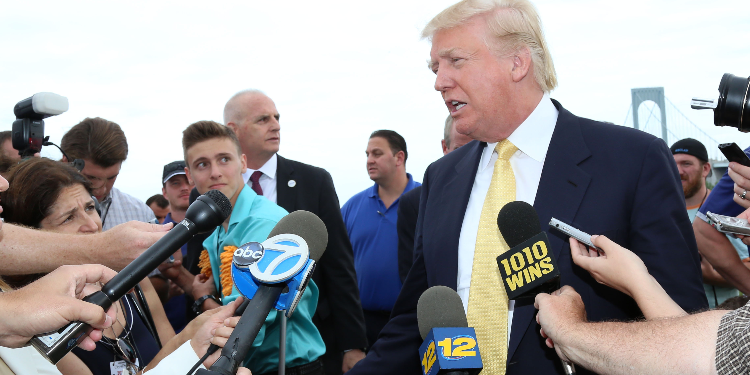
As of March 16, 2020, the total Coronavirus cases in the United States are 3,487 and 68 deaths. However, the data changes day-by-day meteorically, and for the most up-to-date information regarding the U.S. one should be checking with the Centers for Disease Control and Prevention. Experts agree that the number of infected people exceeds the number of laboratory-confirmed cases since many COVID-19 patients are asymptomatic yet fully capable of infecting others.
States with 200 and more COVID-19 cases
The most affected by the Coronavirus American states are California and Washington on the east side and New York state on the north-west.
Currently, New York has reported 950 confirmed COVID-19 cases, and Governor Andrew M. Cuomo is urging the population of about 20 million people to stay at home and keep a safe distance of six feet from others in public spaces. Parallel measures include the closure of all schools by Wednesday, March 18 for two weeks; the prohibition of the gathering of 50 or more people, and the closure of casinos, gyms, bars, restaurants, and theatres until further notice. Non-essential state workers are obliged to work from home, and local governments are expected to reduce their workforce by 50%. Pharmacies, groceries, and gas stations may operate after 8 PM.
Since January 21, when Washington State announced the first case of Coronavirus, the number of cases has reached 904 out of a total population of 7.5 million. Twelve percent of the cases are among people between 30 to 39 years old, 13% between 40 to 49, 16% between 50 to 59, and 15% between 60 to 69. The most affected counties are King (488 cases and 43 deaths) and Snohomish (200 cases and four deaths). The Washington State Department of Health has set up a call centre operating between 6 AM and 10 PM to respond to questions from the public regarding the current situation and the virus. The number is 1-800-525-0127, but callers must note that the centre doesn't have access to COVID-19 testing results.
As of March 15, 2020, there are 392 positive Coronavirus cases in California and six deaths. The state has staffed nineteen public health labs, which are testing for COVID-19, and more will open so that results are announced faster to patients. The California Department of Public Health has decided to postpone or cancel gatherings until the end of March when it will re-evaluate the situation. Individuals that have been exposed to COVID-19 can file a Disability Insurance claim to receive benefits, and employers whose businesses are slowing down due to the economic implications can apply for an Unemployment Insurance program. Besides, the state is providing home services to vulnerable citizens and continues to supply low-income children with meals while schools are closed. As Californians are losing wages and layoffs due to COVID-19 are increasing, Governor Gavin Newson has issued an executive order that authorises local governments to halt evictions and slow foreclosures.
Coronavirus and travel in and out of the United States
As per the most recent Presidential Proclamation, entry to the United States has been suspended for foreign nationals who come from or have been in certain countries during the 14 days before their arrival to the U.S. These countries are China, Iran, the United Kingdom, Ireland, and all 26 Schengen countries (e.g. Germany, France, Italy, Malta, Portugal, and Spain).
The aforementioned Presidential Proclamation doesn't apply to U.S. citizens, permanent U.S. residents, nor their family members under the age of 21. Eligible travellers from impacted countries must enter the U.S. from one of the 13 airports where the Department of Homeland Security has established enhanced screening facilities. Some of these airports are Washington-Dulles International Airport (IAD), Virginia, San Francisco International Airport (SFO), California, John F. Kennedy International Airport (JFK), New York, and Dallas/Fort Worth International Airport (DFW), Texas.
Upon arrival, travellers will go through standard customs, before passing through a screening point where they will be asked about their medical history, current health condition, and contact details. Upon completion of this process, travellers are given written guidance about COVID-19 and can continue to their final destination. Once home, they must self-quarantine and monitor their health for 14 days. During this time, health officials may contact them to check up on their situation. Travellers should note that the rerouting to one of the 13 airports is the responsibility of their airline and at no cost to them.
According to testimonies and reportages from The New York Times and other renowned news sources, travellers arriving the last few days to the U.S. from Europe at one of the 13 airports were greeted with hours-long waits in—ironically—crowded halls where chaos and the threat of Coronavirus prevailed.
Those who must travel outside of the United States should check for updates with the destination country.
Even though some states, including Washington, California, New York, and Florida have declared a state of emergency to be eligible for further funding and authorised to take extreme measures, domestic flights are operating as usual for the time being without travel restrictions.
How businesses, institutions, and means of transport respond
United Airlines, one of America's major airlines, has suspended flights between the U.S. and Beijing, Chengdu, Shanghai, and Hong Kong through April 30, and has reduced capacity to Tokyo-Narita, Osaka, Singapore, and Seoul. The airline carried one million fewer passengers in the first two weeks of March compared to the number of passengers in 2019, and its revenue is expected to be USD 1.5 billion less. Customers whose tickets are between March 10 and April 30, 2020, can change their travel plans without fees. Also, travellers whose travel is disrupted due to government restrictions are eligible for a credit or refund equal to the value of their ticket. From March 20 to the end of April, flights to Europe might be adapted as per demand and restrictions, but United is expected to continue flying to Dublin, Zurich, Brussels, Paris, Amsterdam, Frankfurt, Munich, Lisbon, and London.
Amtrak, the National Railroad Passenger Corporation, is reducing routes by 60% along its busiest line connecting Boston with New York City, Philadelphia, Baltimore, and Washington, D.C. According to the company, bookings have dropped 50%, and cancellations have soared 300%.
Starbucks coffee giant has closed some locations in busy places such as malls and university campuses, and its remaining operations are primarily based on the “to go” model to encourage social distancing. Reduced opening hours also apply, as well as limited seating options, and a special cash handling process. Walmart stores that used to stay open 24 hours are now accessible from 6 AM to 11 PM.
More than 20 states and large cities such as Los Angeles are shutting down K-12 schools in an attempt to contain the spread of the Coronavirus. Some of the most affected states such as Florida, Illinois, Ohio, Pennsylvania, and Washington, and cities such as San Francisco, San Diego, Austin, Texas, and Washington D.C. have already shut down schools.



















